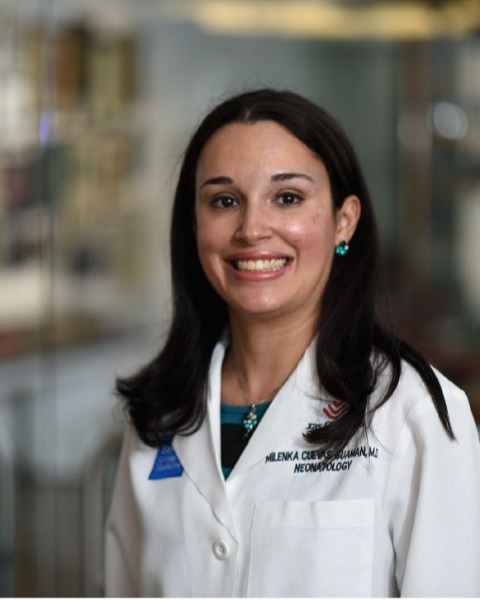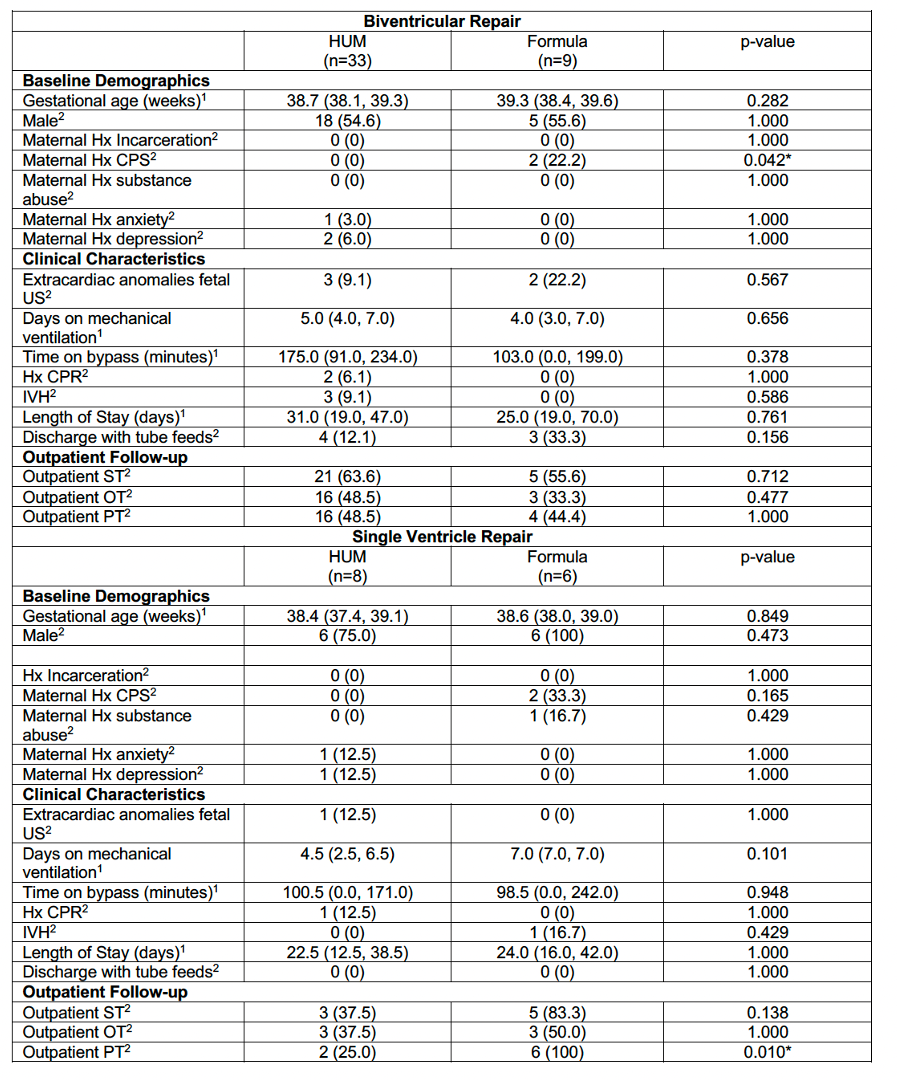Breastfeeding/Human Milk
Category: Abstract Submission
Breastfeeding/Human Milk I
417 - Impact of Human Milk on Neurodevelopmental Outcomes in Neonates with Complex Congenital Heart Disease
Sunday, April 24, 2022
3:30 PM - 6:00 PM US MT
Poster Number: 417
Publication Number: 417.301
Publication Number: 417.301
Elena C. Itriago, Baylor College of Medicine, Houston, TX, United States; Sonia Monteiro, Baylor College of Medicine/ Texas Children’s Hospital, Houston, TX, United States; Laura A. Gollins, Texas Children's Hospital, Houston, TX, United States; Dantin J. Roddy, Baylor College of Medicine, Houston, TX, United States; Lisa M. Noll, Baylor College of Medicine, Houston, TX, United States; Faridis Serrano, Baylor College of Medicine, Houston, TX, United States; Joseph Hagan, Baylor College of Medicine, Houston, TX, United States; Amy B. Hair, Baylor College of Medicine, Houston, TX, United States

Elena C. Itriago, MD (she/her/hers)
Assistant Professor
Baylor College of Medicine
Baylor College of Medicine
Houston, Texas, United States
Presenting Author(s)
Background: Patients with complex congenital heart disease (CCHD) have poorer neurodevelopment outcomes compared with healthy infants. The etiology is multifactorial; potential factors that play a role include genetic abnormalities, prematurity, growth failure, post-surgical physiology, and prolonged hospitalization. However, the role of diet and neurodevelopment in patients with CCHD is unknown.
Objective: To compare neurodevelopmental outcomes at 18 to 24 months in infants with CCHD fed human milk versus formula during the first 30 days of life (DOL).
Design/Methods: In a single-center, retrospective chart review, infants were included if they had a diagnosis of CCHD, > 37 weeks gestational age (GA) at birth, and underwent a Bayley Scales and Infant Development III (BSID III) test between 18 to 24 months. Data on infants’ enteral intake during the first 30 DOL was collected, and subjects were categorized into two cohorts: fed > 50% human milk (HUM cohort) or > 50% formula (Formula cohort). In addition, infants were characterized based on their cardiac repair (biventricular vs. single ventricle repair). Multiple linear regression analysis compared the cohorts after adjusting for involvement with Child Protection Service (CPS).
Results: 56 infants with a GA of 38 ± 1.48 weeks (mean ± SD) were included. 62% of the infants were male. The mean LOS was 41 ± 42 days. 88% of the infants were tolerating oral feedings at discharge. 41 infants were included in the HUM cohort (biventricular repair n=33 and single ventricle repair n=8), and 15 infants were included in the Formula cohort (biventricular repair n=9 and single ventricle repair n=6). For the single ventricle repair group, there was a significantly higher cognitive composite score in the HUM cohort 92.5 ± 14.11 compared to the formula cohort 80 ± 14.32 (p=0.011). Moreover, there was a significantly higher composite motor score in the HUM cohort 100 ± 14.9 compared to formula cohort 79 ± 14.88 (p=0.001) (Table 1 and 2).Conclusion(s): Children with CCHD have an increased risk of NDI. The etiology is multifactorial but the role of diet in neurodevelopmental outcomes is unknown. For infants with single ventricle repair, a diet composed of HUM may help to protect against NDI.
Baseline Demographics and Clinical Characteristics 1. Median (Interquartile range), Wilcoxon rank sum test p-value
1. Median (Interquartile range), Wilcoxon rank sum test p-value
2. Frequency (%), Fisher’s exact test p-value
*Indicates statistically significant association (p < 0.05)
Bayley Scales and Infant Development III Scores 1 adjusted for GA, sex, and LOS > 30 days
1 adjusted for GA, sex, and LOS > 30 days
2 Median (Interquartile range), Wilcoxon rank-sum test p-value
Objective: To compare neurodevelopmental outcomes at 18 to 24 months in infants with CCHD fed human milk versus formula during the first 30 days of life (DOL).
Design/Methods: In a single-center, retrospective chart review, infants were included if they had a diagnosis of CCHD, > 37 weeks gestational age (GA) at birth, and underwent a Bayley Scales and Infant Development III (BSID III) test between 18 to 24 months. Data on infants’ enteral intake during the first 30 DOL was collected, and subjects were categorized into two cohorts: fed > 50% human milk (HUM cohort) or > 50% formula (Formula cohort). In addition, infants were characterized based on their cardiac repair (biventricular vs. single ventricle repair). Multiple linear regression analysis compared the cohorts after adjusting for involvement with Child Protection Service (CPS).
Results: 56 infants with a GA of 38 ± 1.48 weeks (mean ± SD) were included. 62% of the infants were male. The mean LOS was 41 ± 42 days. 88% of the infants were tolerating oral feedings at discharge. 41 infants were included in the HUM cohort (biventricular repair n=33 and single ventricle repair n=8), and 15 infants were included in the Formula cohort (biventricular repair n=9 and single ventricle repair n=6). For the single ventricle repair group, there was a significantly higher cognitive composite score in the HUM cohort 92.5 ± 14.11 compared to the formula cohort 80 ± 14.32 (p=0.011). Moreover, there was a significantly higher composite motor score in the HUM cohort 100 ± 14.9 compared to formula cohort 79 ± 14.88 (p=0.001) (Table 1 and 2).Conclusion(s): Children with CCHD have an increased risk of NDI. The etiology is multifactorial but the role of diet in neurodevelopmental outcomes is unknown. For infants with single ventricle repair, a diet composed of HUM may help to protect against NDI.
Baseline Demographics and Clinical Characteristics
 1. Median (Interquartile range), Wilcoxon rank sum test p-value
1. Median (Interquartile range), Wilcoxon rank sum test p-value2. Frequency (%), Fisher’s exact test p-value
*Indicates statistically significant association (p < 0.05)
Bayley Scales and Infant Development III Scores
 1 adjusted for GA, sex, and LOS > 30 days
1 adjusted for GA, sex, and LOS > 30 days2 Median (Interquartile range), Wilcoxon rank-sum test p-value
